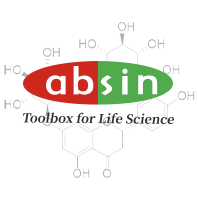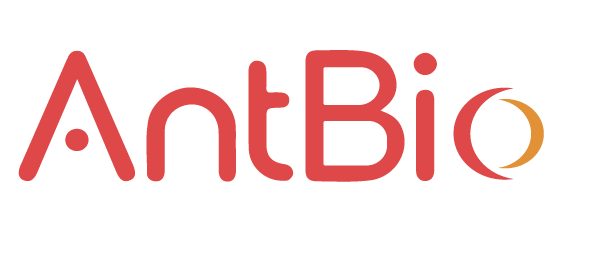Product Details
Product Details
Product Specification
| Usage | 1. Preparation of JC-10 dyeing working solution: The amount of JC-10 staining working solution required for each well of the six-well plate is 1 mL, and the amount of JC-10 staining working solution for other culture vessels is similar; For the cell suspension, 0.5 mL of JC-10 staining working solution is required for every 500,000 to 1,000,000 cells. Take an appropriate amount of JC-10 (200 ×) and dilute JC-10 in the proportion of 8mL of ultrapure water per 50μL of JC-10 (200 ×). Thoroughly dissolve and mix JC-10 with vigorous shaking. Then add 2mL of JC-10 staining buffer (5 ×), and mix well to obtain JC-10 staining working solution. 2. Setting of positive control: CCCP (10 mM) provided in the kit is recommended to be added to the cell culture medium at a ratio of 1: 1000, diluted to 10 μM, and treated the cells for 20 minutes. Subsequently, JC-10 was loaded according to the following method, and mitochondrial membrane potential was detected. For most cells, the membrane potential of mitochondria will usually be completely lost after 20 minutes of 10 μM CCCP treatment, and it should show green fluorescence after JC-10 staining; However, normal cells should show red fluorescence after staining with JC-10. For specific cells, the concentration and duration of CCCP may be different, and it is necessary to refer to relevant literature to decide. 3. For suspension cells: (1) Take 100,000 to 600,000 cells and resuspend them in 0.5 mL cell culture medium. The cell culture medium can contain serum and phenol red. (2) Add 0.5 mL of JC-10 dyeing working solution, reverse it several times and mix well. Incubate in a cell incubator at 37 °C for 20 minutes. (3) During the incubation period, an appropriate amount of JC-10 staining buffer (1 ×) was prepared according to the ratio of adding 4 mL of distilled water per 1 mL of JC-10 staining buffer (5 ×), and placed in an ice bath. (4) After the incubation at 37 °C, 600g was centrifuged at 4 °C for 3-4 minutes to precipitate the cells. Discard the supernatant and be careful not to aspirate the cells as much as possible. (5) Wash twice with JC-10 staining buffer (1 ×): add 1 mL of JC-10 staining buffer (1 ×) to resuspend the cells, centrifuge 600 g at 4 °C for 3-4 minutes, pellet the cells, and discard the supernatant. Add 1 mL of JC-10 staining buffer (1 ×) to resuspend the cells, centrifuge 600g at 4 °C for 3-4 minutes, pellet the cells, and discard the supernatant. (6) After resuspending with an appropriate amount of JC-10 staining buffer (1 ×), observe with a fluorescence microscope or laser confocal microscope, or detect with a fluorescence spectrophotometer or analyze with a flow cytometer. 4. For adherent cells: Note: For adherent cells, if you want to use fluorescence spectrophotometer or flow cytometer detection, you can collect the cells first, and refer to the detection method of suspended cells after resuspension. (1) For one well of a six-well plate, aspirate the culture medium, wash the cells once with PBS or other appropriate solution if necessary according to the specific experiment, and add 1 mL of cell culture medium. The cell culture medium may contain serum and phenol red. (2) Add 1mL of JC-10 dyeing working solution and mix well. Incubate in a cell incubator at 37 °C for 20 minutes. (3) During the incubation period, an appropriate amount of JC-10 staining buffer (1 ×) was prepared according to the ratio of adding 4 mL of distilled water per 1 mL of JC-10 staining buffer (5 ×), and placed in an ice bath. (4) After the incubation at 37 °C, the supernatant was aspirated and washed twice with JC-10 staining buffer (1 ×). (5) 2 mL of cell culture medium is added, and the culture medium may contain serum and phenol red. (6) Observe under fluorescence microscope or laser confocal microscope. 5. For purified mitochondria: (1) The prepared JC-10 staining working solution was diluted 5 times with JC-10 staining buffer (1 ×). (2) 0.9 mL of 5-fold diluted JC-10 staining working solution was added with 0.1 mL of purified mitochondria with a total protein amount of 10-100 μg. (3) Detection with a fluorescence spectrophotometer or a fluorescence microplate reader: After mixing, directly use a fluorescence spectrophotometer to time scan (time scan). The excitation wavelength is 485nm and the emission wavelength is 590nm. If a fluorescent microplate reader is used and the excitation wavelength cannot be set to 485 nm, the excitation wavelength can be set in the range of 475 to 520 nm. In addition, fluorescence detection can also be performed with reference to the wavelength setting in step 6 below. (4) Observation with fluorescence microscope or laser confocal microscope: The method is the same as step 6 below. 6. Fluorescence observation and result analysis: When detecting JC-10 monomer, the excitation light can be set to 490nm and the emission light can be set to 530nm; When detecting the JC-10 polymer, the excitation light can be set to 525 nm and the emission light can be set to 590 nm. Note that it is not necessary to set the excitation light and the emission light at the maximum excitation wavelength and the maximum emission wavelength when measuring fluorescence here. For observation using a fluorescence microscope, when detecting JC-10 monomer, you can refer to the settings when observing other green fluorescence, such as the settings when observing GFP or FITC; When detecting JC-10 polymer, you can refer to the settings when observing other red fluorescence, such as propidium iodide or Cy3. The appearance of green fluorescence indicates that the mitochondrial membrane potential decreases, and the cell is probably in the early stage of apoptosis. The appearance of red fluorescence indicates that the mitochondrial membrane potential is relatively normal and the state of cells is also relatively normal. Precautions: 1. JC-10 (200 ×) will solidify and stick to the bottom, wall or cover of the centrifuge tube at lower temperatures such as 4 °C and ice bath. It can be incubated in a water bath at 20 ~ 25 °C for a while until it is completely melted. After use. 2. JC-10 (200 ×) must be fully dissolved and mixed with the ultrapure water provided by the kit before JC-10 staining buffer (5 ×) can be added. Do not prepare JC-10 staining buffer (1 ×) first and then add JC-10 (200 ×), as it will be difficult to fully dissolve JC-10, which will seriously affect subsequent detection. 3. When washing with JC-10 staining buffer (1 ×) after loading JC-10, keep the JC-10 staining buffer (1 ×) at about 4 ℃, and the washing effect at this time is better. 4. After the JC-10 probe is loaded and washed, try to complete the follow-up detection within 30 minutes. Store in ice bath before testing. 5. Please do not prepare all JC-10 staining buffer (5 ×) into JC-10 staining buffer (1 ×). JC-10 staining buffer (5 ×) should be directly used during the use of this kit. 6. If precipitate is found in JC-10 staining buffer (5 ×), it must be completely dissolved before use. To promote dissolution, it can be heated at 37 °C. 7. CCCP is a mitochondrial electron transport chain inhibitor, which is toxic. Please pay attention to careful protection. 8. For your safety and health, please wear a lab coat and disposable gloves. |
||||||||||
| Beilstein | 0 | ||||||||||
| Description |
Mitochondrial membrane potential detection kit (JC-10) is a kit that uses JC-10 as a fluorescent probe to rapidly and sensitively detect the changes of mitochondrial membrane potential of cells, tissues or purified mitochondria. It can be used for early apoptosis detection.
|
||||||||||
| PubChem CID | 0 | ||||||||||
| Storage Temp. | Dry and protected from light at-20 ℃, shelf life is 12 months. Ultrapure water and JC-10 staining buffer (5 ×) can also be stored at 4 °C. |


